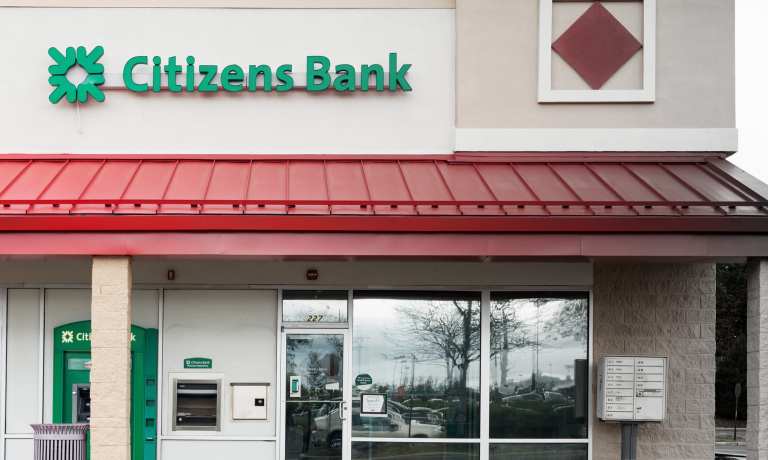“We might be at a tipping point in the market, [in which] the market just demands faster payments,” said Matt Richardson, head of product solutions at Citizens Bank.
Citizens plans to provide greater payments speed to its clients this year by using the RTP rail developed by The Clearing House (TCH). The FI, one of TCH’s owner banks, aims to offer its customers real-time payments during the first half of 2019, and give them the ability in later months to send them.
Richardson recently spoke to PYMNTS about what’s driving corporates’ need for real-time capabilities, how to meet that need and how to make faster payments ubiquitous in the U.S.
The Corporate Case For Real Time
Slower payment processes can jeopardize the survival of small businesses, but large corporations have the budgets and cash flows to weather these concerns. Many major corporations still crave real-time payment services, though, because they provide more detailed information.
Advertisement: Scroll to Continue
However, the current payments environment in the U.S. is fragmented, Richardson said, and faster payment systems can remove some of the headaches of managing payments data and reconciliation. He pointed to RTP — the only real-time payments rail currently available in the U.S. — as an example. The rail was built on the ISO 20022 messaging standard, which sends data and payments together. The ability to send a request for payment via RTP can help smooth reconciliation, he noted.
“[Currently,] you’ve got multiple types of payments coming in, and reconciling all the data from those payments can be a real challenge,” Richardson said. “Leveraging requests for payment could really help in those situations.”
Companies are also flocking to real-time systems because they offer transaction visibility and predictability. Corporations that use these payment schemes unlock two key benefits: They can confirm that payments they sent have been received, and they can reliably estimate how long it will take disbursements to reach recipients.
“[With such a system], they know with exact certainty when a payment will be received by their trading partner, can plan on that and build their payables process around that,” Richardson explained.
The Push Toward Faster Payments Ubiquity
Real-time payments have yet to reach ubiquity in the U.S., even as corporates turn their attention to more instant services. Financial players like Citizens, though, are well aware that RTP’s usefulness increases as it becomes more widespread, and are pushing to expand it.
Richardson stated that educating companies about RTP’s benefits will make them more likely to adopt the rail. In addition, he said it is necessary to work with enterprise account platform providers or clients themselves to upgrade their enterprise resource planning (ERP) systems for seamless interaction with the service. Extending it to smaller FIs involves direct outreach to them — and to financial solution providers like Jack Henry, FIS and others that often handle their own processing needs.
“Part of how we could get to ubiquity on real-time payments is to ensure that all of those banks [that] outsource their core processing have access,” Richardson said. “And the way you do that is through those core processing providers.”
There is no government mandate requiring players to adopt TCH’s privately created system. That said, the government is encouraging the vision of ubiquitous real-time payments in the U.S.
Federal support could also come from a proposed real-time liquidity management tool. The Federal Reserve has suggested that it could create this offering, which would settle payments between Fed-held bank accounts in real time. Richardson said this mechanism could help FIs to offer 24/7 year-round instant payments by ensuring that they have sufficient Fed account funds for around-the-clock settlement.
“ACH and wire are closed on the weekends and holidays, but real-time payments will not be,” Richardson explained. “If you have a long weekend, how will the bank make sure they have an appropriate funding level in their Fed account? And if they need to top it up, what would be the mechanism to do that? We don’t have to deal with that today because the payments aren’t flowing [during these times].”
This liquidity tool could answer those questions, he said, and “the resounding opinion … on [whether the Federal Reserve should] have a liquidity tool is ‘yes.’”
Federal Reserve Proposals
As TCH further expands RTP, the Fed is examining whether to create its own real-time rail. Corporate clients determining how to achieve more instant payments must consider both TCH’s RTP offering and the possibility of a forthcoming federal solution.
Richardson noted that RTP’s design was based on federal recommendations and guidelines for a faster payments system, and that it is necessary for a Fed solution to be interoperable with it. Regardless of how different stakeholders feel about the possibility of a federal payments rail, most agree that the Fed must resolve its deliberations soon.
“The Fed should make the decision quickly because the landscape is changing in faster payments, and the industry won’t necessarily wait around,” he said.
Corporations operating within the rapidly developing U.S. payments landscape are increasingly embracing real-time payment services and the robust data they provide. As they do this, FIs like Citizens Bank are preparing to meet their needs.

 The U.S. payments landscape is shifting into higher gear, pressuring corporations to accelerate their processes. As they work to achieve this, more companies are ditching paper-based methods and embracing digital solutions that streamline payments and reconciliations. Some financial institutions (FIs) are seeking to help their corporate clients tap into real-time payments (RTP) to keep up the pace.
The U.S. payments landscape is shifting into higher gear, pressuring corporations to accelerate their processes. As they work to achieve this, more companies are ditching paper-based methods and embracing digital solutions that streamline payments and reconciliations. Some financial institutions (FIs) are seeking to help their corporate clients tap into real-time payments (RTP) to keep up the pace. 


